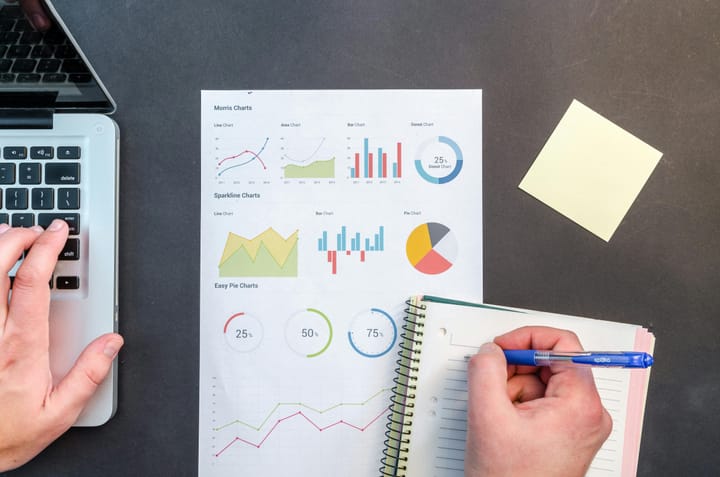Python for Data Analytics: Master the Basics and Skyrocket Your Career!
Unlock Python's power for data analytics and boost your career with our expert insights!

Hey there, data enthusiasts! Are you ready to dive into the magical world of Python and data analytics? Whether you're just starting out or you're a seasoned coder looking to sharpen your skills, you've come to the right place. I'm about to take you on a journey through the realms of Python, where we'll conquer the basics and uncover the secrets that will turbocharge your career in data analytics.
The Pythonic Way to Data Mastery
Python has been a game-changer in the world of data analytics. It's like the Swiss Army knife for data analysts – versatile, powerful, and, oh, so user-friendly. But don't let its simplicity fool you; Python packs a punch that can handle the heaviest of data loads!
Why Python, You Ask?
Well, for starters, Python's syntax is clean and approachable, making it a breeze for beginners. Yet, it's robust enough to satisfy the code cravings of advanced developers. It's the lingua franca of data analytics, machine learning, and so much more.
Setting Up Your Python Environment
Before you can start slicing and dicing data, you need the right tools. Setting up Python is like preparing your workstation before cooking a gourmet meal. You'll need Python itself, a good IDE (Integrated Development Environment), and some essential libraries like NumPy, pandas, and Matplotlib. If you're wondering where to begin, Anaconda is a great all-in-one option that sets you up with everything you need.
The Data Analytics Python Trifecta: NumPy, pandas, and Matplotlib
These three libraries are the pillars of Python data analytics. NumPy is like the math wizard of the bunch, handling complex mathematical operations with ease. pandas is your data manipulation guru, making it a cakewalk to clean, sort, and analyze your datasets. And when you need to visualize your insights, Matplotlib steps in as the artist, painting a thousand words with its plots and graphs.
NumPy – The Mathematical Maestro
NumPy is all about numerical computing. Imagine you've got a pile of data as big as Mount Everest. NumPy is like your trusty sherpa, helping you perform operations on this data at lightning speed. It's all thanks to its array object, which is optimized for high-performance calculations.
Real-World Example:
Let's say you're working with a dataset of housing prices. You want to normalize the prices for comparison. With NumPy, it's as easy as whipping up a one-liner:
normalized_prices = (prices - prices.mean()) / prices.std()
pandas – The Data Wrangler
pandas is your go-to for data manipulation and analysis. It's like having a data butler at your fingertips, ready to tidy up messy datasets and serve up exactly what you need. With its DataFrame object, you can easily read, filter, and explore your data.
Real-World Example:
You're analyzing sales data and need to find the top-performing products. With pandas, it's a piece of cake:
import pandas as pd
sales_data = pd.read_csv('sales.csv')
top_products = sales_data.groupby('product').sum().sort_values('sales', ascending=False)
Matplotlib – The Visualization Virtuoso
Data is only as good as the story it tells, and Matplotlib helps you tell that story visually. Whether it's a simple line graph or a complex heatmap, Matplotlib brings your data to life.
Real-World Example:
You want to show the trend of sales over the last year. Matplotlib makes it fun and easy:
import matplotlib.pyplot as plt
plt.plot(sales_data['date'], sales_data['sales'])
plt.xlabel('Date')
plt.ylabel('Sales')
plt.title('Sales Trend Over the Last Year')
plt.show()
Python Data Analytics in Action
Now that we've got the tools, let's put Python to work. Imagine you're analyzing customer data to identify purchasing patterns. With Python, you can effortlessly merge datasets, clean up any inconsistencies, and run analyses to uncover trends that can drive strategic business decisions.
A Bite-Sized Example: Customer Segmentation
You've got a dataset with customer demographics and purchase history. Your mission? Segment these customers into groups for targeted marketing.
Here's a simplified version of how Python makes it happen:
- Load the data using pandas.
- Clean the data (handle missing values, remove duplicates, etc.).
- Use clustering algorithms like k-means from a library like scikit-learn.
- Analyze the clusters to understand the characteristics of each segment.
Python and Big Data – A Match Made in Heaven
As data grows bigger, Python's role becomes even more crucial. With libraries like PySpark and Dask, Python is well-equipped to handle big data. These tools allow you to distribute your data processing across multiple machines, scaling up your analytics game to new heights.
PySpark – Taming the Big Data Beast
When your data outgrows a single machine, PySpark comes to the rescue. It lets you leverage Apache Spark's power using Python's friendly syntax. With PySpark, you can chew through terabytes of data without breaking a sweat.
Real-World Example:
You've got a humongous dataset of web logs, and you need to analyze user behavior. PySpark enables you to run complex transformations and aggregations over your distributed data like so:
from pyspark.sql import SparkSession
# Initialize Spark Session
spark = SparkSession.builder.appName('WebLogAnalysis').getOrCreate()
# Load and analyze data
logs_df = spark.read.json('logs.json')
user_behavior = logs_df.groupBy('user_id').count().orderBy('count', ascending=False)
Dask – Parallel Computing Made Pythonic
Dask is like having a Pythonic supercomputer at your disposal. It's designed for parallel computing and can handle datasets that are larger than your machine's memory. It integrates beautifully with pandas and NumPy, making it a seamless transition from small to big data.
Real-World Example:
Suppose you're crunching numbers on a dataset that's too large for pandas to handle comfortably. Dask allows you to scale up your analysis with minimal code changes:
import dask.dataframe as dd
# Load a large dataset with Dask
large_data = dd.read_csv('large_dataset.csv')
# Perform operations similar to pandas
result = large_data.groupby('category').sum().compute()
The Art of Storytelling with Data
Data analytics isn't just about number crunching; it's also about weaving compelling stories from your insights. Python helps you do this with libraries like Seaborn for beautiful statistical plots, and Bokeh or Plotly for interactive visualizations.
Imagine you're presenting to stakeholders. A static bar chart might put them to sleep, but an interactive dashboard? Now you've got their attention!
Seaborn – Statistical Plots with Elegance
Seaborn builds on Matplotlib and makes it easy to create informative and attractive statistical graphics. It's like having a graphic designer fine-tune your visualizations.
Real-World Example:
You want to show the distribution of customer spend in your store. Seaborn's got you covered:
import seaborn as sns
# Assume 'data' is your DataFrame and 'spend' is the column of interest
sns.histplot(data['spend'], kde=True)
plt.show()
Bokeh and Plotly – Interactive Visuals at Your Fingertips
Bokeh and Plotly take your data visualizations to the next level with interactivity. Users can hover, click, and zoom, exploring the data in a hands-on manner.
Real-World Example:
You've built a model to predict housing prices and want to showcase the results. With Bokeh or Plotly, you can create an interactive graph that lets viewers explore different predictors and their impact on prices.
import plotly.express as px
fig = px.scatter(data_frame=data, x='square_footage', y='price', color='neighborhood')
fig.show()
Python's Ecosystem – The Community's Treasure Chest
One of Python's greatest strengths is its vibrant community. The Python ecosystem is a treasure trove of resources, with libraries for virtually any task in data analytics. Whether it's scraping data from the web with Beautiful Soup, or deep learning with TensorFlow, the community has got your back.
Skyrocketing Your Career with Python Data Analytics
By mastering Python for data analytics, you're not just learning a programming language; you're unlocking a universe of opportunities. Data is the new oil, and Python is your drill.
Continuous Learning – The Key to Mastery
The world of Python and data analytics is ever-evolving. To stay ahead, you need to be a lifelong learner. Follow blogs, take online courses, and contribute to open-source projects. The more you learn, the more you can leverage Python's power to propel your career.
Wrapping Up – Your Journey Begins Here
We've only scratched the surface of what's possible with Python for data analytics. As you embark on this journey, remember that every expert was once a beginner. Start with the basics, build a solid foundation, and challenge yourself with real-world projects.
I'd love to hear about your experiences, challenges, and triumphs in the world of Python data analytics. Drop a comment below, share your thoughts, or ask questions. Together, we can demystify data analytics and make it an adventure worth embarking on.
Now, go forth and analyze! May your insights be deep, and your career growth exponential. Happy coding, data warriors!



Comments ()